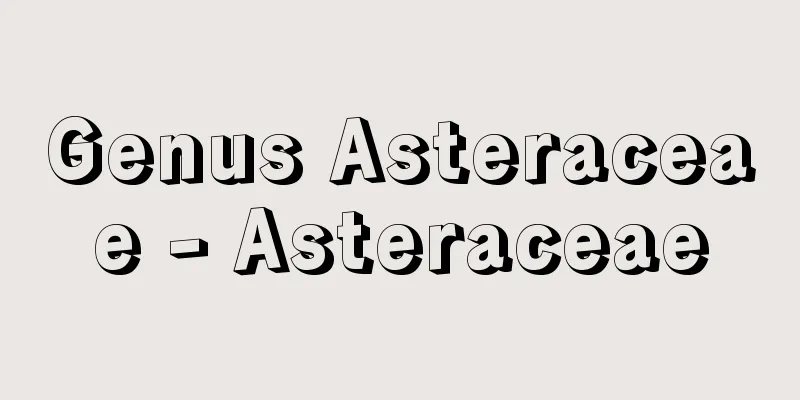Profit - English

|
Profit is the amount remaining after deducting all expenses incurred in making the sale, such as wages, rent, interest, and raw materials, from sales revenue. Generally, wages are considered to be remuneration for labor services, rent is considered to be remuneration for land services, and interest is considered to be remuneration for capital services, but what is profit remuneration for? There are various theories on this, but if we classify them according to the commonly accepted theory, they can be classified as follows: (1) Implicit factor income theory As is evident in the case of individual business owners, what is called profit includes what should be considered as remuneration for production factors. For example, profit includes what should be considered as implicit wages, implicit interest, and implicit rent elements, such as wages, which are remuneration for the use of one's own labor services, interest, which is remuneration for the use of one's own capital services, and rent, which is remuneration for the use of one's own land (natural resources). (2) Monopoly theory: It arises from natural or artificial limitations in the supply of production factors. (3) Innovation theory: Profits are the reward for the entrepreneur's innovation - introducing a new product, developing a new method of production, exploring a new market or source of supply, establishing a new business structure, etc. - and they disappear as these innovations are imitated and spread to other businesses. (4) Risk-bearing theory A characteristic of a monetary economy is that it contains uncertainty about the future. Therefore, entrepreneurs must bear risks when they run a business, and to make them bear those risks, a certain reward, that is, profits, must be given to them. The innovation hypothesis can be considered a special case of the risk-taking hypothesis, because innovation is meaningful precisely because the future is uncertain. (5) Surplus value theory Profit is seen as the transformed form of surplus value. In other words, it is considered as the form of surplus value, which is defined as the difference between the labor time invested in the production of a certain good and the labor time necessary to reproduce the labor power invested in producing that good (measured as the labor time required to produce the means of living for the worker). Therefore, profit increases by extending the labor hours or shortening the necessary labor hours. In this theory, profit also includes interest and rent. [Yuichiro Otsuka] Theory of Profit Determination in Modern EconomicsAs mentioned above, there are several theories on the definition of profit, but next let us look at the profit (or profit rate) determination theory that is currently dominant in "modern economics." [Yuichiro Otsuka] Marginal productivity theory To simplify the discussion, we will assume that income (or expenses) is broadly divided into two categories, wages and profits, with the former being income from labor and the latter from capital (so profits include interest and capital includes entrepreneurial talent. We will also ignore land). In this case, if we assume that companies are operating in a profit-maximizing manner, factor prices will be equal to the marginal productivity of each factor. In other words, the profit rate will be equal to the marginal productivity of capital, and the wage rate will be equal to the marginal productivity of labor. This can be shown as follows. Let Y , K , and L be the product, capital, and labor, respectively, and r and w be the profit rate and wage rate, respectively. If we assume that the production function is linearly homogeneous, then Y = F ( K , L ) = rK + wL gives us y = f ( k ) = rk + w . Here, y and k are the values obtained by dividing Y and K by L. The profit rate is Thus, the marginal productivity theory states that factor prices are determined at the intersection of the marginal productivity curve, which represents the demand curve for each factor, and the supply curve for each factor. [Yuichiro Otsuka] Keynesian theory This is based on the assumption that the propensity to save from capitalists or profits ( s p ) is different from the propensity to save from workers or wage income ( s w ), and sees the rate of accumulation as determining the rate of profit. If we set s w = 0 for simplification, savings from profits ( P ) -- which is also savings in the entire economy -- is given by s p P. Therefore, the equation savings = investment ( I ) gives I = s p P , and dividing both sides by capital gives [Yuichiro Otsuka] Profit from Marxian EconomicsIn Marxian economics, profit appears as the transformed manifestation of surplus value. The capitalist commodity value W consists of the value of consumed constant capital c , the value of variable capital v , and surplus value m . That is, W = c + v + m . The part of this commodity value, c + v , which merely compensates for the value spent by the capitalist in producing the commodity, collectively constitutes the cost price k . Therefore, from the viewpoint of the cost price, even though the part v is a newly added value in the production process and, moreover, a value created with surplus value, it disappears, and its role unique to capitalism also disappears. This is because, from the viewpoint of the capitalist, the cost of producing a commodity is measured by capital expenditure ( c + v ), and not by the labor expenditure ( c + v + m ) actually required for the production of that commodity. Under this relationship, i.e., including the relationship of compensating for expenditure through the circulation of the commodity, i.e., the sale of the commodity, surplus value is simply the surplus of the commodity value over the cost price. When the commodity returns from circulation after the end of the production process, it is merely an increase in value equal to the total capital value consumed ( c + v ). However, in the case of the total value of invested capital, this point of view goes further and surplus value is not only the part of invested capital that is consumed and goes into the value-increasing process, but also the increase in that part that does not go into the product, such as the non-wearable part of fixed capital. In other words, since the total capital is functioning in the actual labor process, it is considered to contribute entirely to the formation of surplus value. Thus surplus value is the increase in value of the total capital used in production. This surplus-value, the excess over cost-price, arises from the production carried out by capital, and therefore appears to arise equally from the various value elements of the capital invested in production, and from the whole of the capital invested, and therefore used. It does not matter from which part of the capital invested in production it arises, and it is of no concern to the capitalist. Thus the rate of profit is conceived as the ratio of surplus-value to the whole of the capital invested. This is nothing other than a transformed form of the rate of surplus-value, and on the basis of the transformation of this rate of surplus-value into the rate of profit, the transformation of surplus-value into profit is induced. The rate of profit is in fact the historical starting point preceding profit, and thus, as the product conceived by the capitalist of the whole of the invested capital, surplus-value takes the form of profit p , as the excess over cost-price. Profit is the transformed form of surplus value, which for the moment is still the same as surplus value, although it is mystified in the capitalist conception, although it takes the form which necessarily arises from capitalist production itself. Commodity value is now transformed from W = c + v + m into W = k + p . On the one hand, the value of labour power appears in the transformed form of wages, as the "value of labour", while on the other hand, surplus value appears in the transformed form of profit. In this transformed form of profit, the whole secret of the origin of surplus value and the relationship between capital and wage labour are concealed. Profit therefore appears in the appropriate form, that of an excess over cost prices, which corresponds to the latter. Surplus value must therefore not be confused with profit. [Kaido Katsutoshi] The rate of profit and its movementAlthough profit is initially the same amount as surplus-value, the rate of profit p ' is from the outset substantially different from the rate of surplus-value m '.
Now, in terms of the individual rate of profit, surplus value and profit are the same quantity, but in various production sectors, the rate of surplus value, the turnover of capital, and the organic composition of capital, which are the determining factors of the rate of profit, are more or less different, and as long as commodities are sold at their value, the production of value and the production of surplus value are different, and the individual rate of profit of the sector itself is different. Therefore, even if the turnover of capital and the rate of surplus value are constant, the organic composition of capital differs in each sector, and the rate of profit is inevitably different. However, from the different profit rates, a medium or general profit rate is formed by competition between the capitals in each sector. This is because capital constantly strives for a favorable profit rate, and as a result of this competition, capital in each production sector obtains a divisible portion of the total surplus value according to the proportion of the capital in each production sector that constitutes the total social capital. The capital structure and surplus value of the total social capital consist of the average of the capital structure of each production sector = average cost price and the average of the surplus value = average profit, and thus become the production value. The commodity price that corresponds to this average capital structure also corresponds to value, and profit corresponds to surplus value. However, in sectors with a higher capital structure, the production price that earns the average profit is higher than the commodity value, and in sectors with a lower capital structure, it is lower than the commodity value. This is because profit is averaged and generalized through the movement of capital = competition. Therefore, all commodities are sold at a price that allows an equal rate of profit to be realized for an equal amount of capital. Regardless of the capital composition of each department or other conditions, the capital of each department as a whole earns an equal rate of profit, and each capital secures an average profit. This is a matter of realizing the surplus value produced and distributing it among the departments, and commercial profits also participate in the average profit. Thus commodity value becomes the price of production, and profit becomes average profit, which does not coincide quantitatively or individually with surplus value, so that the nature and origin of profit is completely hidden, leaving no trace of it, and the mystification of capitalism is further advanced. [Kaido Katsutoshi] "Economic Growth by J. Robinson, translated by Yamada Katsumi (1963, Toyo Keizai Shinposha)" ▽ "Distribution Theory and Capital by P. Gallegnani, translated by Yamashita Hiroshi (1966, Miraisha)" ▽ "The Theory of Production and Distribution by J. Stigler, translated by Matsuura Tamotsu (1967, Toyo Keizai Shinposha)" ▽ "Economics (11th edition) by P.A. Samuelson, translated by Tsuru Shigeto, 2 volumes (1981, Iwanami Shoten)" ▽ "Economic Growth and Income Distribution by L.L. Pasinetti, translated by Miyazaki Koichi (1985, Iwanami Shoten)" ▽ "Capital by K. Marx, Volume 3, Part 1, Chapters 1 and 2 (translated by Mukaizaka Itsuro, Iwanami Bunko / translated by Okazaki Jiro, Otsuki Shoten, Kokumin Bunko)" [References] | | | | | | | |©Shogakukan "> Profit Determination Theory (Marginal Productivity Theory) Source: Shogakukan Encyclopedia Nipponica About Encyclopedia Nipponica Information | Legend |
|
利潤とは、売上高からその売上げに要した賃金・地代・利子・原材料費などの全費用を控除した額である。ところで一般に、賃金は労働用役に対する報酬であり、地代は土地用役に対する報酬であり、利子は資本用役に対する報酬であるとされるが、利潤は何に対する報酬であろうか。これにはいろいろな説があるが、通説に従ってそれらを分類すると、次のようになる。 (1)暗黙的要素収益説 個人業主などに顕著にみられるように、利潤といわれるものには生産要素への報酬とみなさるべきものが含まれている。たとえば、本来、本人の労働用役に対する報酬である賃金、本人所有の資本用役に対する報酬である利子、本人所有の土地(自然資源)用役に対する報酬である地代、すなわち暗黙的賃金、暗黙的利子、暗黙的地代要素とみなさるべきものが利潤のなかに含まれている。 (2)独占説 生産要素の供給が、自然に、もしくは人為的に制限されることから生ずる。 (3)新機軸説 利潤は企業家の新機軸、すなわち新しい商品の導入、新しい生産方法の開発、新しい市場や供給源の開拓、新しい経営組織の確立、といった事柄に対する報酬であり、これらの新機軸が模倣されて他の企業に普及していくにつれて消滅する。 (4)危険負担説 貨幣経済の特徴は、それが将来の不確実性を内包しているということである。したがって、企業家は事業を行うにあたって危険を負担しなければならず、企業家にその危険を負担させるには、一定の報酬、すなわち利潤が与えられなければならない。 新機軸説もこの危険負担説の特殊ケースであると考えることができる。なぜならば、新機軸はまさに将来が不確実であるがゆえに意味をもつものだからである。 (5)剰余価値説 利潤は剰余価値の転化された現象形態としてとらえられる。すなわち、ある財の生産に投下される労働時間と、その財を生産するために投下される労働力の再生産に必要な労働時間(これは労働者の生活資料の生産に要する労働時間で計られる)の差として定義される剰余価値の現象形態とみなされる。したがって利潤は、労働時間の延長や必要労働時間の短縮によって増加する。なお、この説では、利潤には利子や地代も含まれることになる。 [大塚勇一郎] 近代経済学における利潤決定理論利潤の概念規定については、上記のようにいくつかの説があるが、次に、現在「近代経済学」において支配的な利潤(または利潤率)決定理論についてみてみよう。 [大塚勇一郎] 限界生産力説議論を簡単にするために、所得(または費用)は賃金と利潤の二つの範疇(はんちゅう)に大別され、前者は労働、後者は資本所得であると仮定する(それゆえ利潤のなかには利子が含まれ、資本のなかには企業家才能が含まれることになる。また、土地は無視する)。この場合、企業が利潤率極大行動をとるものとすると、要素価格は各要素の限界生産力に等しくなる。すなわち、利潤率は資本の限界生産力に、賃金率は労働の限界生産力に等しくなる。これは次のように示せる。いまY、K、Lをそれぞれ生産物、資本、労働とし、r、wをそれぞれ利潤率、賃金率とする。生産関数を一次同次とすれば、Y=F(K, L)=rK+wLよりy=f(k)=rk+wが得られる。ただしy、kは、Y、KをLで除した値である。利潤率は かくして、限界生産力説は、各要素の需要曲線を意味する限界生産力曲線と各要素の供給曲線との交点で、要素価格が決定されると説く。 [大塚勇一郎] ケインズ的理論これは資本家または利潤からの貯蓄性向(sp)と労働者または賃金所得からの貯蓄性向(sw)が異なるという想定にたって、蓄積率が利潤率を決定するとみる。簡単化のためにsw=0と置くと、利潤(P)からの貯蓄――それは経済全体の貯蓄でもある――はspPで与えられる。したがって、貯蓄=投資(I)の均等よりI=spPとなり、この両辺を資本で除すと [大塚勇一郎] マルクス経済学からみた利潤マルクス経済学においては、利潤は、剰余価値の転化された現象形態として現れる。 資本主義的商品価値Wは、消耗された不変資本の価値c、可変資本の価値vおよび剰余価値mからなる。つまりW=c+v+mである。この商品価値のうち、商品生産のために資本家が費やした価値を補填(ほてん)するにすぎない部分c+vは、一括して費用価格kを構成する。したがって費用価格の観点からは、v部分が生産過程で新しく付加された価値であり、さらに、剰余価値を伴って創造された価値であるにかかわらずそれが消滅し、その資本主義独自の役割も消滅している。それは、資本家の立場からは、商品の生産のための費用が資本支出(c+v)で計られ、その商品の生産に現実に要費している労働支出(c+v+m)で計られるのではないからである。この関係のもと、すなわち、商品の販売という流通を通じて支出されたものを補填する関係を含むもとでは、剰余価値は単に商品価値のうちの費用価格を超える超過分となる。生産過程の終了後、商品流通から復帰するときには、消費された資本価値全体(c+v)の価値増加分にすぎなくなる。 ところが、投下資本価値全体ということでは、この観点はさらに進んで、剰余価値が投下資本のうち価値増殖過程に入り込む消費された価値部分のみならず、固定資本の非磨滅部分のような生産物に入り込まない部分の増加分ともなる。つまり、現実の労働過程では総資本が機能しているから、剰余価値の形成には全部的に寄与しているとみなされる。こうして剰余価値は、生産に充用された資本全体に対する価値増加分となる。 この剰余価値である費用価格を超える超過分は、資本が行う生産から生ずるから、生産に投ぜられた資本のいろいろな価値要素から均等に生じたようにみえ、投ぜられた、したがって充用された資本全体から発生しているようにみえるのである。それが生産に投ぜられた資本のどの部分から生ずるかはまったく問われず、また、資本家にとってはどうでもよいことになる。こうして、投ぜられた資本全体に対する剰余価値の比率として利潤率がとらえられる。これは、剰余価値率の転化された形態にほかならないが、この剰余価値率の利潤率への転化を基礎として、剰余価値の利潤への転化が誘導される。利潤率は、事実上、利潤に先だつ歴史的出発点であるが、このように、投ぜられた資本全体の、資本家的に観念された産物としては、剰余価値は費用価格を超える超過分として、利潤pという形態を受け取る。 利潤は、剰余価値の転化された形態であるが、さしあたりここでは、まだ剰余価値と同じである。ただ、資本家的観念で神秘化されている。といっても、資本主義的生産そのものから必然的に発生してくる形態をとっているのではあるが。商品価値は、いまやW=c+v+mからW=k+pに転化される。一方で労働力の価値が「労働の価値」としての賃金という転化された形態で現れるのに対し、他方その対極では、剰余価値が利潤という転化された形態で現れる。このように、利潤に転化された形態では剰余価値の起源の全秘密や資本と賃労働の関係が隠蔽(いんぺい)される。だから利潤は、費用価格に対応した、費用価格の超過分という、ふさわしい形態で現れる。したがって、剰余価値と利潤とを混同してはならない。 [海道勝稔] 利潤率とその運動利潤はさしあたり剰余価値と同じ量であっても、利潤率p'は初めから実質的に剰余価値率m'と異なる。
ところで、個別的利潤率では剰余価値と利潤とは同じ量であるが、種々の生産部門においては、利潤率の決定要因である剰余価値率、資本の回転、資本の有機的構成は多かれ少なかれ異なっており、商品が価値どおりに販売される限り、価値生産も剰余価値の生産も異なり、部門そのものの個別的な利潤率は異なる。そこで、資本の回転、剰余価値率が一定でも、資本の有機的構成は各部門で異なり、利潤率も異ならざるをえない。 しかし、異なる利潤率から、各部門間の資本間では、競争により一つの中位的または一般的利潤率が形成される。なぜならば、資本は絶えず有利な利潤率を目ざし、その競争の結果、各生産部門における資本が社会的総資本の部分をなす割合に応じて総剰余価値の可除部分を得るからである。社会的総資本の資本構成と剰余価値は、各生産部門の資本構成の平均=平均的費用価格と剰余価値の平均=平均利潤とからなり、かくして生産価値となるのである。この平均的資本構成と一致する商品価格は価値とも一致し、利潤は剰余価値と一致する。だが、資本構成がより高い部門では、平均利潤を得ている生産価格は商品価値より高く、資本構成が低い部門では、商品価値より低くなる。それは、資本の移動=競争を通じて利潤が平均化され一般化されたからである。 したがって、すべての商品は、等しい量の資本に対して等しい率の利潤が実現されるような価格で販売される。各部門の資本構成その他の条件いかんを問わず、各部門の資本を集めた総体としては等しい率の利潤を獲得し、各資本は平均利潤を確保する。これは、生産された剰余価値の実現の問題であり、各部門の分配の問題であって、商業利潤も平均利潤に参加するのである。 このように、商品価値は生産価格となり、利潤は平均利潤となって、量的にも個別的には剰余価値と一致しなくなる。その結果、利潤の本質および起源は完全に隠蔽され、まったく痕跡(こんせき)すら残さなくなり、資本主義的神秘化はさらに推し進められるのである。 [海道勝稔] 『J・ロビンソン著、山田克巳訳『経済成長論』(1963・東洋経済新報社)』▽『P・ガレニャーニ著、山下博訳『分配理論と資本』(1966・未来社)』▽『J・スティグラー著、松浦保訳『生産と分配の理論』(1967・東洋経済新報社)』▽『P・A・サムエルソン著、都留重人訳『経済学(原書代11版)』全2冊(1981・岩波書店)』▽『L・L・パシネッティ著、宮崎耕一訳『経済成長と所得分配』(1985・岩波書店)』▽『K・マルクス著『資本論』第3巻第1篇第1章、第2章(向坂逸郎訳・岩波文庫/岡崎次郎訳・大月書店・国民文庫)』 [参照項目] | | | | | | | |©Shogakukan"> 利潤決定理論(限界生産力説) 出典 小学館 日本大百科全書(ニッポニカ)日本大百科全書(ニッポニカ)について 情報 | 凡例 |
Recommend
COCOM
Abbreviation for Coordinating Committee for Export...
Dosan Line
The name of the track of the Shikoku Railway Comp...
Soen
Dates of birth and death unknown. A painter-monk ...
Sorolla (English spelling) Joaquín Sorolla y Bastida
1863‐1923 Spanish painter. Born in Valencia. After...
Bloemfontein
The capital of the Orange Free State in the center...
Yaoundé - Yaoundé (English spelling)
The capital of Cameroon, in central Africa. It is...
Chuquicamata (English spelling)
A mining city in northern Chile. It is located abo...
The Angel of Sorrow (English: Der blaue Engel)
A German film made in 1930. Joseph von Sternberg, ...
Tama Hills
A hilly region in the southern Kanto region, stre...
Henry van de Velde
1863‐1957 Belgian Art Nouveau architect and design...
Halftone - Amihan
A printing plate in which the shades of a photogr...
Kanamori ruins
…And in higher latitudes, bone and horn tools con...
Shunran (Cymbidium goeringii) - Shunran (English name)
An evergreen perennial plant of the orchid family....
Suwon
A city located about 41 km south of Seoul in Gyeon...
Angular stone tools
It is a type of weapon-shaped stone product from t...





![Minori [town] - Minori](/upload/images/67ccf52171e49.webp)



